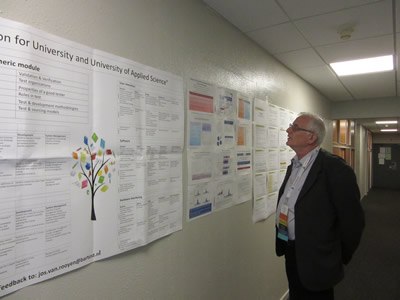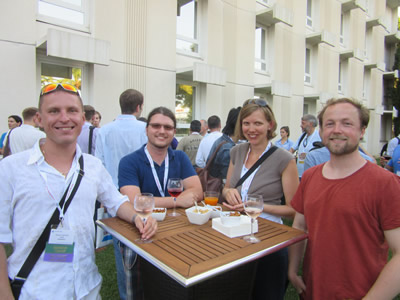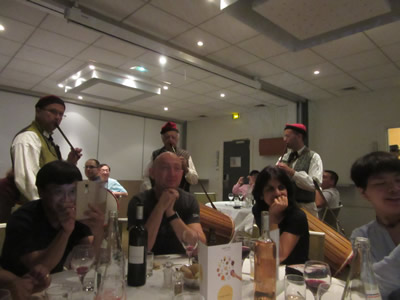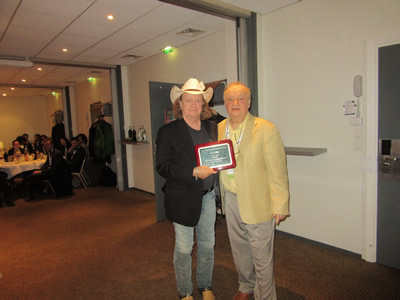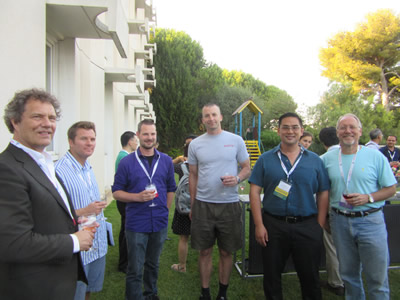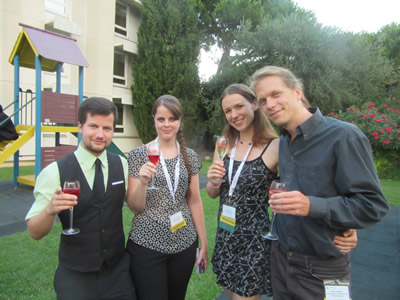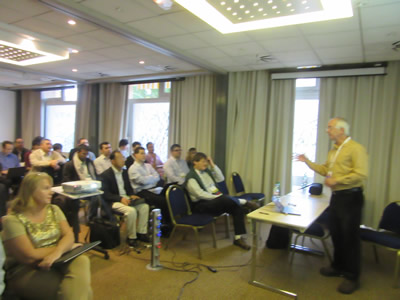CENTRIC 2018 - The Eleventh International Conference on Advances in Human-oriented and Personalized Mechanisms, Technologies, and Services
October 14, 2018 - October 18, 2018
CENTRIC 2018: Tutorials
T1. End-to-end, Multi-domain and Multi-tenant Aspects in 5G Network Slicing
Prof. Dr. Eugen Borcoci, University „Politehnica” Bucharest, Romania
Prerequisites: general knowledge on IP layered architectures, protocols, introductory knowledge on 4G/5G, SDN, ETSI-NFV, Cloud/Fog computing, IoT (Internet of Things).
The 5G (fifth generation) networks, embedded in end-to-end (E2E) architectures are considered today as a main technology to support the increasing demand of the current and future networks and services, in terms of flexibility, capacity, bandwidth, number of terminals, dense deployments, response time, energy consumption and so on. Challenging applications as Internet of Things, smart cities, Internet of vehicles, etc., are few examples of driving forces for 5G development. There is a wide range of research and development projects related to different areas of the 5G network in 5G Infrastructure Public-Private Partnership (5G PPP phase I and II).
Network slicing is an important way to enable resource sharing among multiple tenants–network operators and/or services, thus being a key functionality for next generation mobile networks. Additionally, both architecture and also the implemented systems should be able to span over multiple administrative domains and multi-operator environments, offering to the users full E2E capabilities. The slicing mechanisms should enable tenants to benefit of sharing, while retaining the ability to customize their own users’ allocation. Therefore, E2E, multi-domain and multi-tenant capabilities are essential features in 5G slicing area.
Powerful support technologies are available today, generally seen as network softwarization, like Software Defined Networking (SDN) programmable network infrastructures, Network Function Virtualization (NFV) running network functions as software and also the cloud/fog/edge computing paradigms. In cooperation, the above technologies can support 5G slicing, aiming to meet the various services requirements posed by the 5G use cases. Integrated management and control based on ETSI Management and Orchestration (MANO) framework is envisaged. The latter will enable network flexibility and programmability, by creation and lifecycle management of virtual network slices tailored to the needs of 5G verticals, expressed in the form of Mobile Virtual Network Operators (MVNOs) for automotive, eHealth, massive IoT, massive multimedia broadband.
This tutorial covers in a joint vision, the E2E, multi-domain and multi-tenant aspects in 5G slicing, while considering NFV/SDN and cloud approaches.
T2. Neural and Probabilistic Learning Methods for Robotics and other Domains
Prof. Dr. Elmar Rückert, Institut für Robotik und Kognitive Systeme, University of Lübeck, Germany
In this tutorial, I discuss state of the art probabilistic and neural models that can be used to predict complex motions of humans or robots. The models can handle partial observable, missing data and are robust to sensor noise, which is demonstrated in challenging human postural control studies. In this experiment, a Gaussian mixture model was used to predict goal directed right arm motions solely from observing the motion of the trunk or left arm. The model can be also used for model validation, classification and movement analyses and is as such interesting for a broad range of research approaches working with multi-modal motion data.
In the second part of my tutorial, I discuss how recurrent neural networks can be used for motion planning and obstacle avoidance. The model is based on the probabilistic inference framework and can be trained through reinforcement learning. It can be used to explain neural recordings of mental replays and pre-plays in rats during navigation tasks and provides a probabilistic theory for more complex cognitive reasoning tasks. The tutorial will conclude with extensions of this neural network that can be trained from millions of data samples which was exploited for learning dynamics models in robotics.
T3. Exploration and Analysis of Software Engineering Data with R
Prof. Dr. Luigi Lavazza, Universita` degli Studi dell'Insubria, Italy
Effective management of a software development or maintenance process requires knowledge of the software product and process. Reliable knowledge can be achieve mainly from measures of software products and processes.
Through measures we can gain insights in the development and maintenance activities that let us take better and more timely decisions. For instance, measures concerning development effort and software product properties like size, complexity, etc. support the construction of models that can be used for cost estimation in the early phases of development. Measures concerning product and process qualities and defects support the construction of defect-proneness models that suggest what parts of the system under construction deserve additional quality assurance activities.
In this tutorial, we shall see how to visualize measures concerning software products and process, and how to build simple statistical models that represent the quantitative relationships among software product and process qualities and properties. We will also perform basic evaluations of the models, to assess to what extent we can trust them.
The R language and statistical computing environment will be introduced. The R studio will be used.





